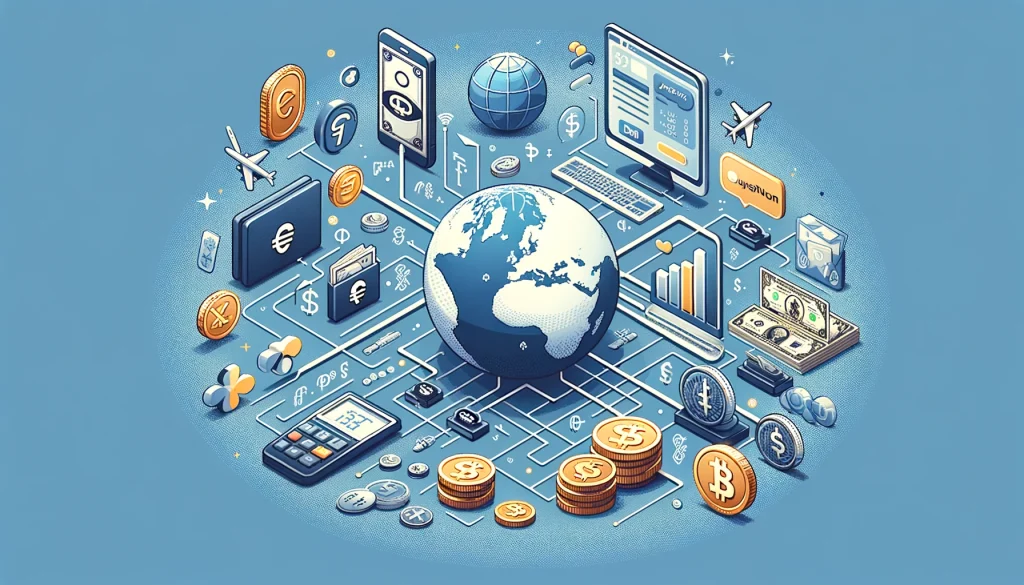Navigating international money transfers can be a crucial need for expatriates, businesses, and families in the Philippines.
Whether you’re sending money home, paying for services, or transferring funds to family in the Philippines, understanding your options is key.
This guide explores the best methods for international money transfers and answers common questions to simplify the process for you.
Necessary Documents for Sending Money Abroad
When preparing to send money internationally, you’ll typically need the following documents:
- Valid Identification: Passport, national ID, or driver’s license to verify your identity.
- Recipient’s Information: Full name as per their ID, their address, and their bank account details including the SWIFT/BIC code.
- Proof of Funds: Depending on the amount and the service provider, you might need to provide proof of the source of your funds, like a bank statement or a payslip.
Everything You Need to Know About ATM Withdrawal Limits
ATM withdrawal limits are important to understand for both sending and receiving money internationally:
- Daily Limits: Most ATMs have a daily withdrawal limit, which can vary from PHP 10,000 to PHP 50,000 in the Philippines.
- International Cards: Withdrawal limits for international cards may differ and banks may charge additional fees.
- Increasing Limits: Contact your bank if you need to increase your temporary withdrawal limit for large transactions.
Online Money Transfer Services
Online services offer a convenient way to send money internationally. Some popular options include:
- Wise (formerly TransferWise): Known for low fees and real exchange rates.
- PayPal/Xoom: Offers quick transfers but check for service fees and exchange rates.
- WorldRemit: Good for cash pickups and mobile money alongside traditional bank transfers.
Transferring Money in the Form of Virtual Currency
Cryptocurrency transactions represent an innovative way to transfer money across borders:
- Bitcoin and Other Cryptocurrencies: Allows for quick international transfers without traditional banking fees. However, be aware of the volatility and regulatory environment in both the sending and receiving countries.
- Blockchain Wallets: Both sender and recipient need to have a digital wallet set up to use cryptocurrencies for transfers.
- Regulations and Taxes: Research the legal implications and tax obligations in your home country and the Philippines when using virtual currencies for transactions.
Methods for International Money Transfers
Bank Transfers
Many banks in the Philippines offer international wire transfer services. This method is secure but can come with higher fees and longer processing times compared to other options.
Online Money Transfer Services
Companies like PayPal, TransferWise (now Wise), and WorldRemit offer convenient online platforms for sending money abroad. They typically provide competitive exchange rates and lower fees than traditional bank transfers.
Money Transfer Operators
Western Union, MoneyGram, and similar services allow you to send cash that can be picked up at various locations. These are fast but may have higher fees.
Cryptocurrency Transfers
For the tech-savvy, cryptocurrencies offer an alternative way to send money across borders. This method requires understanding of cryptocurrencies and careful consideration of the volatility and legal aspects.
FAQs on International Money Transfers From and To the Philippines
1. What information do I need to send money abroad?
You’ll need the recipient’s full name, address, bank name, bank account number, and the bank’s SWIFT/BIC or IBAN code.
2. How long does an international transfer take?
Transfer times vary depending on the method, ranging from minutes with money transfer operators to up to 5 business days for bank transfers.
3. What are the fees for sending money internationally?
Fees depend on the service provider, amount, and speed of transfer. Online services often offer lower fees than traditional banks.
4. Is there a limit to how much money I can send?
Limits can vary. Some services set daily, monthly, or per-transaction limits. Banks may allow higher amounts but require additional documentation.
5. Can I send money from the Philippines to any country?
Most services allow transfers to a wide range of countries, but sanctions or regulations may restrict transfers to certain destinations.
6. How do I receive money in the Philippines from abroad?
You can receive funds directly into your bank account, pick up cash at a local agent (for certain money transfer services), or through a mobile wallet.
7. What’s the best way to send large amounts of money?
Bank transfers and some online transfer services are typically best for large transactions due to their security measures.
8. Can I track my international money transfer?
Yes, most services provide a tracking option using a reference number to monitor the status of your transfer.
9. How do I choose the best service for my needs?
Consider factors like fees, exchange rates, transfer speed, convenience, and the amount you’re sending. Comparing several services can help you find the best fit.
10. Are international money transfers taxed in the Philippines?
Taxes may apply depending on the amount and the specific circumstances of the transfer. Consult a financial advisor for advice on potential tax implications.
Understanding your options for international money transfers and being aware of the costs and regulations can help you manage your finances effectively, whether you’re in the Philippines or abroad. With the right approach, you can ensure your money reaches its destination safely and affordably.



